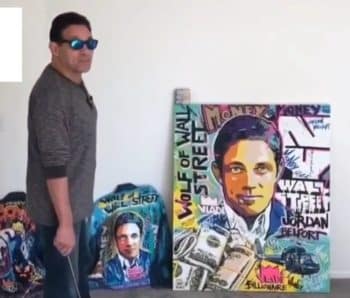Home » Business News • Crime and Fraud • Spotlight • US business news » Allen Stanford’s $7 billion Ponzi scam saw him buy cricket team
Allen Stanford’s $7 billion Ponzi scam saw him buy cricket team
https://www.whatjobs.com/news/usa/us-business-news/allen-stanfords-7-billion-ponzi-scam-saw-him-buy-a-cricket-team-and-get-jailed-for-110-years

By Hugh Fort in Business News, posted February 24, 2024

The tycoon Allen Stanford was jailed in 2012 after he scammed an incredible $7 billion from investors in a 20-year Ponzi scheme.
Stanford's scam was uncovered in 2009.
He was found to have sold fake high-yielding certificates of deposit through his Antigua-based Stanford International Bank.
Stanford told investors their money was in good hands but was using their deposits to fund his lavish lifestyle.
He spent the stolen cash on private jets and pumping money into his own cricket team.
READ MORE: BERNIE MADOFF AND THE BIGGEST FRAUD IN U.S HISTORY
Federal agents raided the offices of Stanford Financial in February 2009.
He was charged with "massive ongoing fraud" around his investment scheme.
Stanford's assets were frozen and placed into receivership.
It was reported that Stanford tried to escape the US the same day his offices were raided, trying to book a private jet to Antigua.
However, he was scuppered by the company insisting on a wire transfer, rather than his credit card.
He was found at his girlfriend's home in Virginia and issued with civil charges.
He was then arrested in June 2009
The scam was described as a "massive Ponzi scheme.
It included misappropriating billions of dollars from investors and faking the bank's records in an attempt to hide the scam.
"Massive Ponzi scheme"
The Security and Exchange Commission called the fraud a "massive Ponzi Scheme."
It said: "Stanford International Bank's financial statements, including its investment income, are fictional."
Stanford denied any responsibility and said his companies were well-run.
He denied charges of fraud, conspiracy, and obstruction.
His time in prison awaiting trial saw him violently attacked and beaten by another inmate.
READ MORE: THE HEALTHSOUTH SCANDAL THAT SAW SENIOR EXECUTIVES JAILED
The trial was delayed by Stanford being deemed unfit to stand.
First, the cause was deemed to be the effect of his anti-anxiety medication.
He then claimed to have amnesia after the prison attack.
He was eventually deemed to stand trial in December 2011.
The trial lasted between January and March 2012.
The jury convicted convicting Stanford as the mastermind behind a vast Ponzi scheme after three hours of deliberation.
Prosecutors pushed for the maximum sentence allowed under US law - a staggering 230 years.
They called him a "ruthless predator" who "lived a life steeped in deceit."
On the other end of the scale, Stanford's lawyers suggested his sentence should be just 31 to 44 months.
110 years in prison
The final sentence handed down was 110 years in prison.
Stanford was also ordered to forfeit $5.9 billion, with U.S. District Judge David Hittner saying the crime was "one of the most egregious frauds ever presented to a trial jury in federal court."
During sentencing, Stanford protested his innocence, blaming "Gestapo tactics" from the government.
The proceedings continued after he was jailed as another judge, David Godbey, sided with the SEC in a civil suit against Stanford.
He was ordered to give back $6.7 billion and pay a $5.9 billion fine.
Stanford appealed his conviction, which was rejected in 2015.
A second appeal was rejected in 2021.
Need Career Advice? Get employment skills advice at all levels of your career
Stanford still denies any wrongdoing
He still denies the charges, telling the Daily Mail in an interview earlier this year: "The government needed a scapegoat, someone who was not so politically connected... and they got me.
"You know — colourful, maverick, billionaire Texan living it large in the Caribbean.
"Thirteen years in a maximum-security prison is not the most pleasant experience. It's an abysmal hellhole and you are also in with a group of inmates who are at the higher level of offences — violence and other things."
"I did not do one thing wrong, nor did I create any scheme to defraud anybody.
"I am working as hard as I can to get this conviction thrown out so everybody who lost a dime in Stanford International Bank is paid back in full because they are not going to get it with the receivership that has been in place for 13 years.
'You tell me: if it was a damn Ponzi scheme, how was it after 13 years they keep selling assets?
"And they keep paying attorneys and other professionals billions of dollars every year to do nothing but manage something that supposedly broke?"
What has happened since?
Sky News reported in September 2021 that $1 billion had been recovered after the fraud.
Another trial has been scheduled for January 2023 where it will be decided whether five banks accused of helping facilitate the scam should pay compensation to their customers.
Follow us on YouTube, Twitter, LinkedIn, and Facebook














